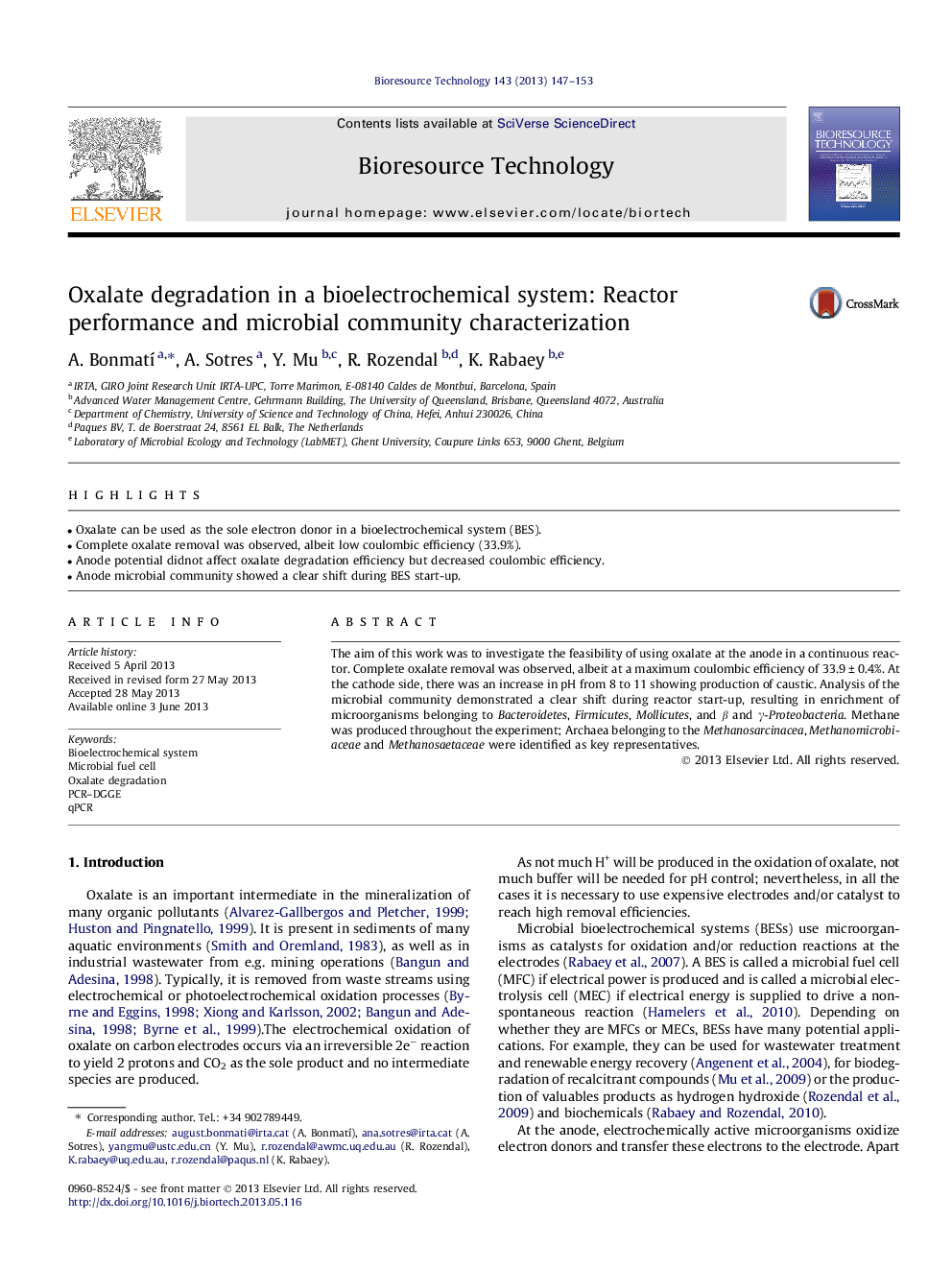| Article ID | Journal | Published Year | Pages | File Type |
|---|---|---|---|---|
| 7081378 | Bioresource Technology | 2013 | 7 Pages |
Abstract
The aim of this work was to investigate the feasibility of using oxalate at the anode in a continuous reactor. Complete oxalate removal was observed, albeit at a maximum coulombic efficiency of 33.9 ± 0.4%. At the cathode side, there was an increase in pH from 8 to 11 showing production of caustic. Analysis of the microbial community demonstrated a clear shift during reactor start-up, resulting in enrichment of microorganisms belonging to Bacteroidetes, Firmicutes, Mollicutes, and β and γ-Proteobacteria. Methane was produced throughout the experiment; Archaea belonging to the Methanosarcinacea, Methanomicrobiaceae and Methanosaetaceae were identified as key representatives.
Related Topics
Physical Sciences and Engineering
Chemical Engineering
Process Chemistry and Technology
Authors
A. BonmatÃ, A. Sotres, Y. Mu, R. Rozendal, K. Rabaey,
